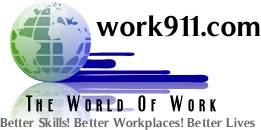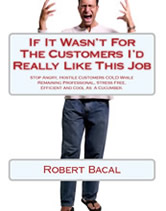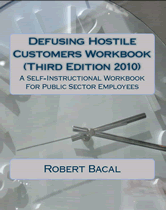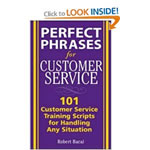
TQM-What Is It?
If you are reading this book, it is likely that you already know what we mean when we use the term Total Quality Management. Still, it's a good idea to define the term, and provide a brief overview.
Certainly TQM can be defined in a number of ways, and the details of different approaches can vary somewhat. However, a good starting definition, drawn from Capezio & Morehouse is:
"Total Quality management refers to a management process and set of disciplines that are coordinated to ensure that the organization consistently meets and exceeds customer requirements. TQM engages all divisions, departments and levels of the organization. Top management organizes all of its strategy and operations around customer needs and develops a culture with high employee participation. TQM companies are focused on the systematic management of data of all processes and practices to eliminate waste and pursue continuous improvement. "
Perhaps a better way of understanding TQM is to compare a "TQM organization with what we might call a "traditional organizations". tet's look at a number of differences.
1. Customer-Driven vs. Company-Driven
Traditional organizations tend to make their decisions based on what is most convenient for them, rather than what is wanted and expected by their customers. Being customer-based means gatf7ering information from customers/clients and modifying services and processes to meet those needs as well as possible. In government, this is not always easy, due to the conflicting responsibilities of a department, and the multiple customers/stakeholders involved in government situations. However, in many cases moving to a customer-driven organization can yield many positive results for government departments.
2. Long-Term vs. Short-Term Orientation
Traditional organizations tend to think and plan with respect to short term outcomes, white TQM organizations tend to think in much larger time spans. A typical example might be that a TQM organization would look at downsizing as having effects over a decade or two, while a traditional organization would look only at the immediate budgetary issues, letting future chips fall where they may.
Also, successful TQM organizations make a long term commitment to the principles of TQM, rather than looking at TQM as a program; something with a beginning and end. This means patience.
3. Data-Driven vs. Opinion-Driven
Traditional organizations tend to be managed by gut feel, or by opinion. They guess at what their customers want, and guess at the costs of waste, etc. TQM organizations base their decisions on data they collect; on customer needs, on waste, on costs, and on the sources of problems. While judgment is always involved in any decision, TQM organizations begin with the data, not with the solution.
4. Elimination of Waste vs. Tolerance of Waste
Most organizations operate with a high degree of waste and inefficiency. Traditional organizations consider waste, whether it be in time, materials, etc, as a normal part of their operation. TQM organizations are very active in identifying wasteful activities, and eliminating them.
5. Continuous Improvement vs, Fire Fighting
Traditional organizations tend to address problems with the way they do things only when there is a major problem or crisis. The watchword in traditional organizations is: "if it ain't broke, don't fix it", except that often it IS broke, but nobody is paying any attention .
TQM organizations are always looking for improvement, and are constantly engaged in problem-solving to make things better.
6. Prevention vs, Inspection
Traditional organizations tend to fix problems after the fact. Rather than trying to prevent problems, they catch them after the fact, which is very costly. TQM organizations work to prevent problems and errors, rather than simply fixing them.
7. Cross-Function Teams vs. Fortressed Departments
Traditional organizations tend to have sub-units that work autonomously and with little communication or involvement with other units. For example, personnel may have only limited interaction with other departments. Or, on a local level, administrative staff may have little communication with other staff in a government branch, and have a different reporting structure.
In TQM organizations, there is more use of cross-functional teams; teams convened for a particular purpose or purposes, with representation from a number of units or levels in the organization. The use of cross-functional teams means that input is gained from parts of the organization that need to be involved.
8. High Employee Participation vs. Top-Down Hierarchy
Traditional organizations tend to have very restricted communication and decision- making patterns. Employees are told what to do, rather than being inctuded in figuring out what to do. Information tends to flow from top to bottom.
In TQM organizations, employees are much more actively involved in both the decision-making and communication processes. Information flows both top to bottom and bottom to top. For that matter, information also flows sideways.
9. Problem-Solving vs, Blame
Traditional organizations tend to look to affix blame for things that go wrong. TQM organizations attack the problems in their organizations rather than the people. They fix things.
10. Systems Thinking Vs. Isolation
Traditiona~ organizations tend to see the parts and processes of their organization as single things, unretated to other part of the organization. TQM organizations tend to recognize that most often, probtems arise as a result of multiple causes, and that sub- units are interdependent. TQM organizations tend to see problems as a result of the entire system.
11. Leadership vs. Management
Traditional organizations tend to see people as objects to be managed; told what to do, disciplined, tracked, etc. TQM organizations exhibit more confidence in staff and more trust, and expect MORE from them, not less.
That's a good starting point. There are probably a number of other comparisons to be made, but that gives us some common ground for discussion.
The Three Quality Gurus
While TQM may seem to be a new development to many, it has been around since the 1940's. One of the reasons why TQM seems to be the newest fad was that it was not embraced by North Americans, but it did find a home in post-WWII Japan.
The most well-known advocate of TQM was W. Edwards Deming, a statistician who, while largely ignored in North America, was actively involved in the '40 in the rebuilding of Japan. Deming passed away recently, and was in his 90's.
Two other gurus are Philip Crosby and Joseph Juran. Both are a bit younger than Deming, but have been influential in the field. It is worthy of note that the three gurus do not always agree, probably due to differences in terms of what each thinks is important, rather than in basic principles.
For those interested in learning more about TQM, it might be a good idea to read material from each of these experts.





